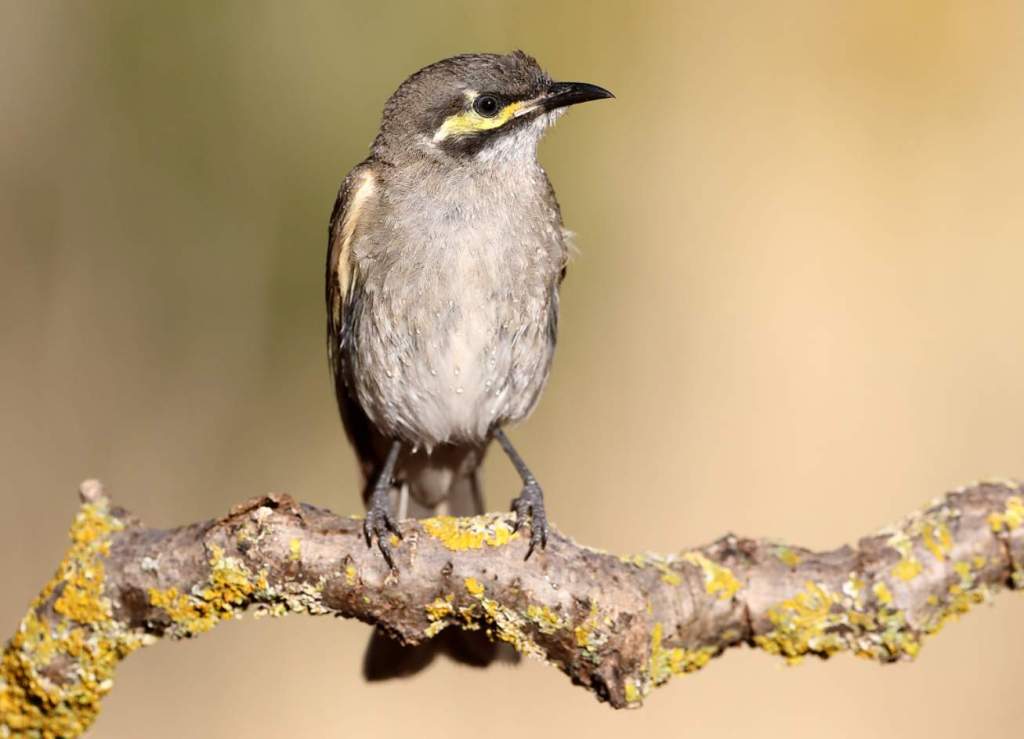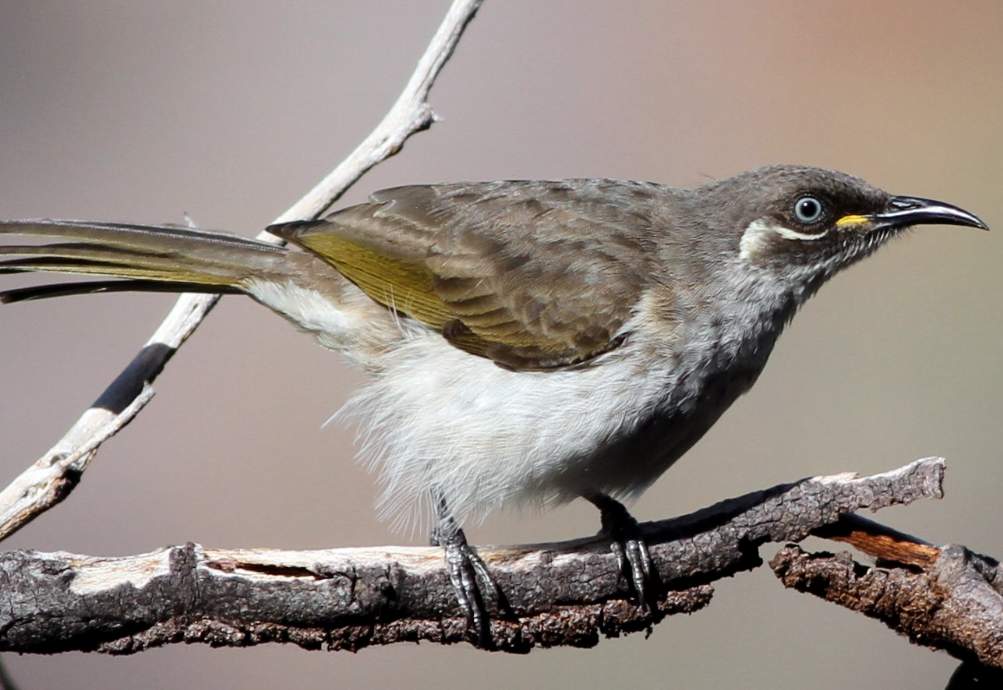DESCRIPTION – The Tawny-crowned Honeyeaters (Gliciphila melanops) is a passerine bird native to Southern Australia. The male Tawny-crowned Honeyeaters bird rises in spectacular song-flights in spring to mark their breeding and feeding territories. They flutter almost vertically up, and then spiral back down on outstretched wings and tails, like a falling leaf, filling the air with their metallic fluting.
They also sing in shorter bursts from the top of exposed vantage perches. The birds often gather in loose colonies to breed but seem to nest in pairs. Tawny-crowned Honeyeater is a medium-sized bird that is about 150-170 mm in length. After breeding, the groups typically disperse and wander locally, but rarely travel far. Living in coastal heaths and Mallee scrubs around southern Australia.
The bird’s natural habitat is low shrub-land vegetation and heath-lands but can stretch into the sand plains with appropriate vegetation. In 1801, famous ornithologist John Latham described Twany-crowned honeyeater as Certhia melanops.
IDENTIFICATION – Both sexes are similar; however the male is a little larger. The crown edged is white around the forehead and over the brow. Hind-neck to rump brown-gray streaked dusky on mid-back. The wings and the plain tail are deep gray-brown, edged dull yellow, and underwing coverts tawny-rufous. Broad black sash from lores, through eyes, and a bit over ears and downsides of the breast; small, flared white ear tuft. Tawny-crowned Honeyeater underparts are pure white, washed fawn-gray with dusky chevrons on flanks and undertail. The species eye is dark brown with black bill and feet are leaden gray.
lMMATURE – The young bird is brown-streaked cream-buff overhead and back. The black facial sash restricted to face, replaced with dusky, russet-washed stripe downsides of the breast; ear tuft yellow; breast and flanks shortly striped brownish over white.

CALL: Tawny-crowned Honeyeater call is a mournful piping whistle of a high, fluted e-peer-peer-pee-pee spaced and ascending gradually in pitch; given throughout the year.
SONG: Tawny-crowned Honeyeater song is introduced by call and developing into a series of run-together rich metallic trilled whistles, falling in pitch and cyclic; given in song-flights and from vantage perches during breeding.
NESTING – The breeding season takes place from July to December; mostly in September and November. The hefty nest a cup-shaped is made of bark fiber, seaweed, and grass; lined with soft material. The bird is often used in fur or wool; placed on the ground or in low scrub sometimes as high as 2-3 m above ground.
Eggs – The clutch contains two to three rarely four; white or pale pink sparingly spotted and blotched with red-brown; oval, beige eggs at the size of about 21 x 14 mm.

DISTRIBUTION – It is confined to in the southwest, ranges from near Shark Bay to Israelite Bay; and in the southeast from the Eyre Peninsula north to the mouth of Richmond River, New South Wales. Also, it can be found in Kangaroo Island, Bass Strait islands, and Tasmania, where the bird is rare. There are two races: one on the mainland; the other in Tasmania. Since 1971, the bird has been extirpated from urban Sydney.
SUBSPECIES – There are two subspecies G. melanops chelidonia, and G. melanops melanops.
OTHER NAME: This bird is also known as “Fulvous-fronted Honeyeater”.

FEED – Tawny-crowned Honeyeater’s main food sources are insects and nectar. They feed mainly on nectar in low shrubberies ‘Phylidonyris rnelanops’ of ‘epacrids’, ‘proteads’, bottlebrushes, myrtles and ‘Xanthorrhoea’, among others. Much feeding is done low within thickets, even on the ground, the birds hopping along and craning up to probe overhanging sprays.
They also take many insects, catching most in the air in short sallying flights out from vantage perches and picking up others flying past or from the ground during foraging forays. Occasionally the honeyeaters also enter the forest to take nectar from blossoming eucalypts and to probe bark and crevices for the honeydew excreted by insects sheltering there.
SIMILAR SPECIES – The similar species are Western Spine bills and Crescent Honeyeater.
FAMILY – Meliphagidae
GENUS – Gliciphila







